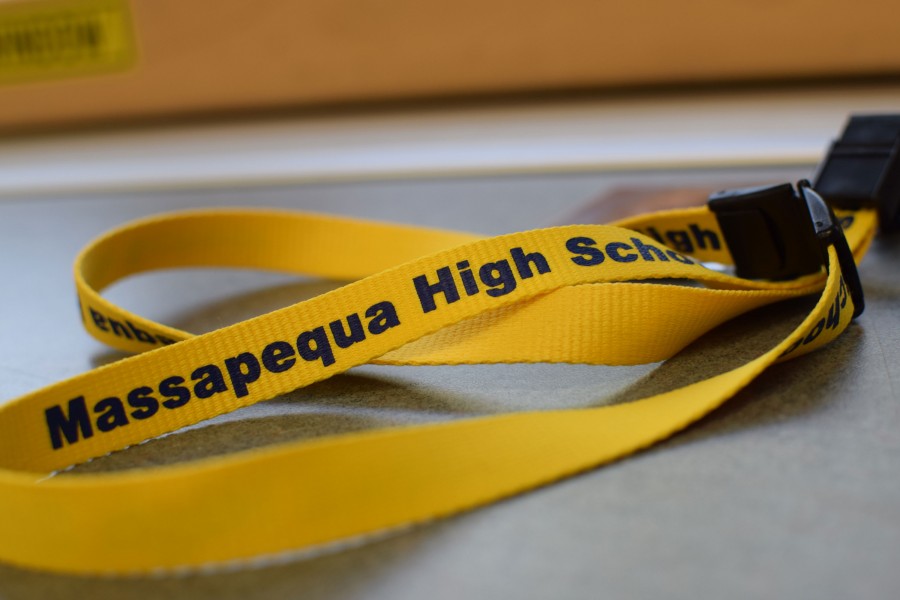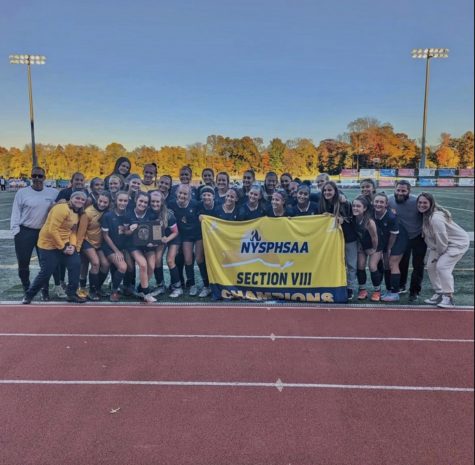Lanyards: revisiting MHS safety policy one year later
MHS’ infamous lanyard policy was introduced last year and has had mixed reviews since its introduction.
Has Massapequa High School’s security policy, amended for the 2014-2015 school year to include the infamous lanyard policy, delivered on its promise of keeping students safe?
During the 2014-2015 school year, students of Massapequa High School were surprised to learn of the new safety policy that required each student to wear gold lanyards that held student identification cards.
Although this code was mentioned briefly in a letter mailed home by Dr. Williams during the summer, many did not know about the policy until the first day of school. The change came about with the intent of ensuring student safety while keeping MHS’ open campus policy, where students can leave the campus during scheduled lunch and out periods.
“We know this may be a difficult change, so we will give students time to get acclimated,” Dr. Williams said last year of the new policy. However, it seemed as though the administration wasted no time in punishing students who forgot their lanyard at home or not wearing it at all times.
Many students had a distinctly negative reaction to the administration’s undertaking of creating an effective safety policy. While perhaps no one questioned prioritizing safety, the policy stressed out some students and angered some because of its disciplinary repercussions.
“It’s not that it was stressful persay, but it definitely made me somewhat paranoid because I was more concentrated on who would see me if I didn’t have my lanyard on and get me in trouble rather than relaxing during the breaks between classes,” senior Giorgia Piantanida said.
Despite varying student feelings towards the policy, lanyards were undoubtedly successful in quickly identifying who— and on the flipside, who wasn’t ——a student of Massapequa High School. One incident, which included trespassing on the premises, was quickly taken care of by school security; it is certainly possible that the bright yellow lanyards played an important role in identifying that the trespasser was not a student.
Perhaps strictness was necessary, in the beginning of the year, to encourage students to take the policy seriously. However, the anxiety that stemmed from not wanting any disciplinary action taken against them for an honest mistake led to some students taking rash actions. For example, one student at MHS, after realizing that they forgot their lanyard at home after stepping off the school bus, decided to take advantage of a possible weakness in the system.
“I knew that the entrance in the center lobby always had [administration] waiting to catch you without your lanyard, and I didn’t want supervised [lunch]. Someone told me that another door never checked if you had it or not, so I walked in that way to avoid the main area where they check lanyards. It worked,” the anonymous student said.
If students could enter through a building without a lanyard, couldn’t anyone, hypothetically? Through word of mouth, students were able to skirt around the system— without the administration knowing.
Evidently, the safety policy had flaws, but this was to be expected in its inaugural year. What is important is that the lanyards were an added measure to keep students safe. If keeping students safe required a stricter disciplinary code, then so be it. Safety is a privilege, and not a guarantee— ultimately, the lanyard policy is deserving of respect from students and staff alike.
What can students expect for the upcoming school year?
MHS students can anticipate that the lanyard policy will stay, albeit with a few alterations.
According to the letter from Dr. Williams, enclosed with students’ schedules, “On the first day of school, we will issue student ID cards and lanyards, which students will be required to wear as they enter and exit the building throughout the day and when they attend MHS events.”
In fact, the identification number feature of the ID cards will be in use this year— a step up from last year, where lanyards were only used as a quick visual to identify Massapequa High School students.
“Students will be required to show and/or scan their IDs in a number of different places in the building,” Dr. Williams said.
Although it is unclear now how the student body will feel about the lanyard policy over the next school year, what is clear is that the highs and lows of last year have been taken into consideration by school administrators to make this year the most successful yet.
“Safety and security are always top priorities for us.” Dr. Williams said. “…We will continue to examine our protocols and enhance the security measures we have in place in order to provide a safe learning environment for students and staff.”










